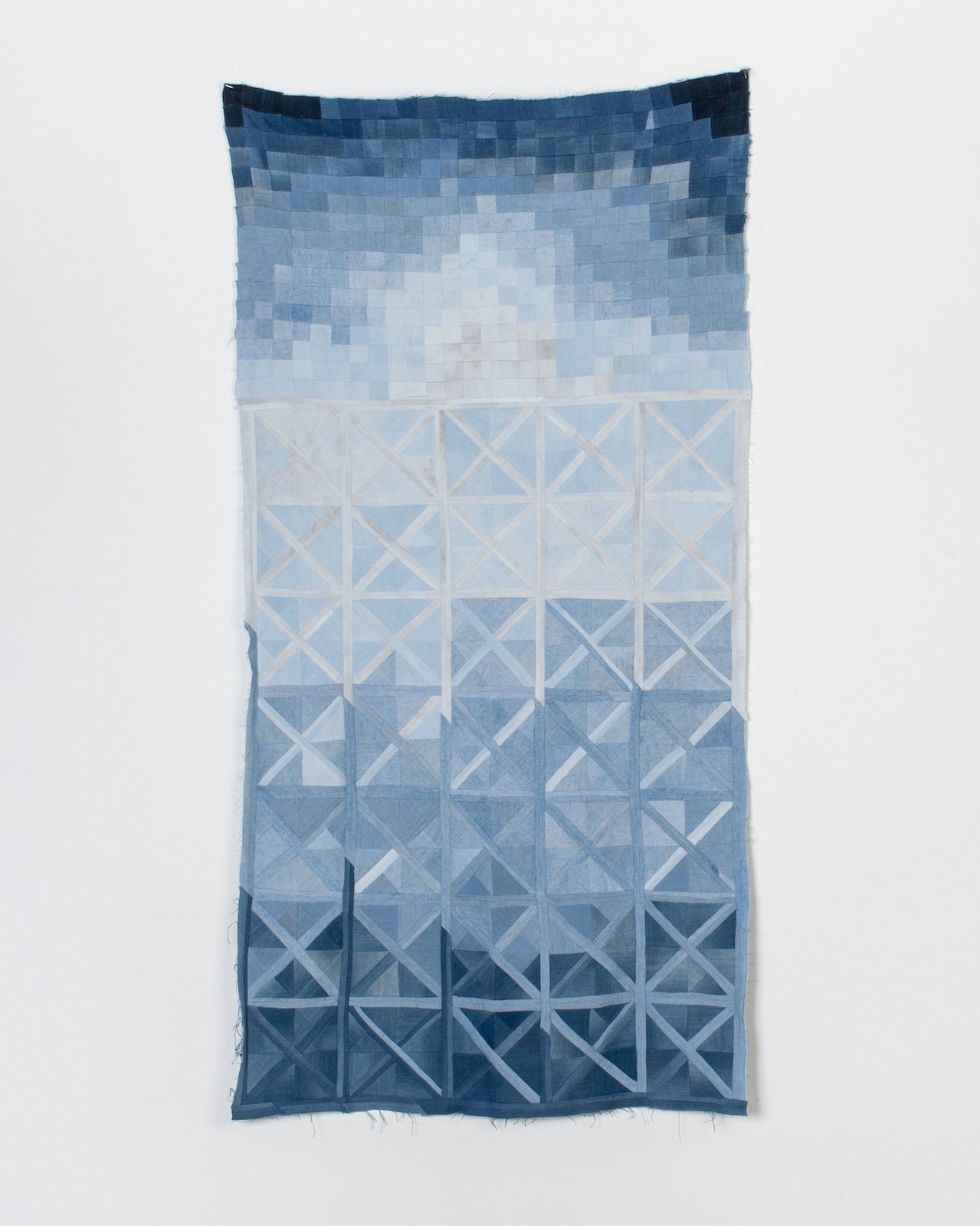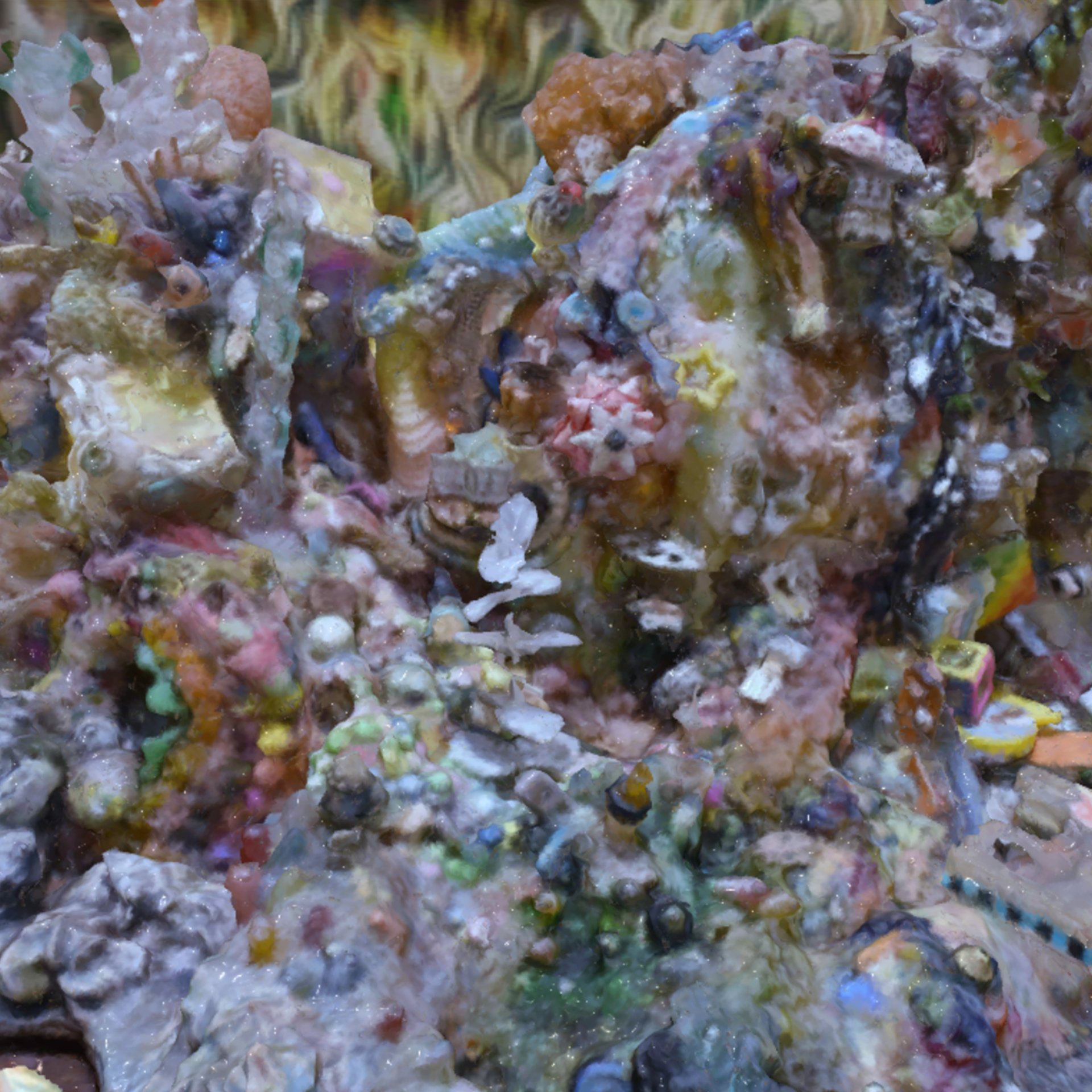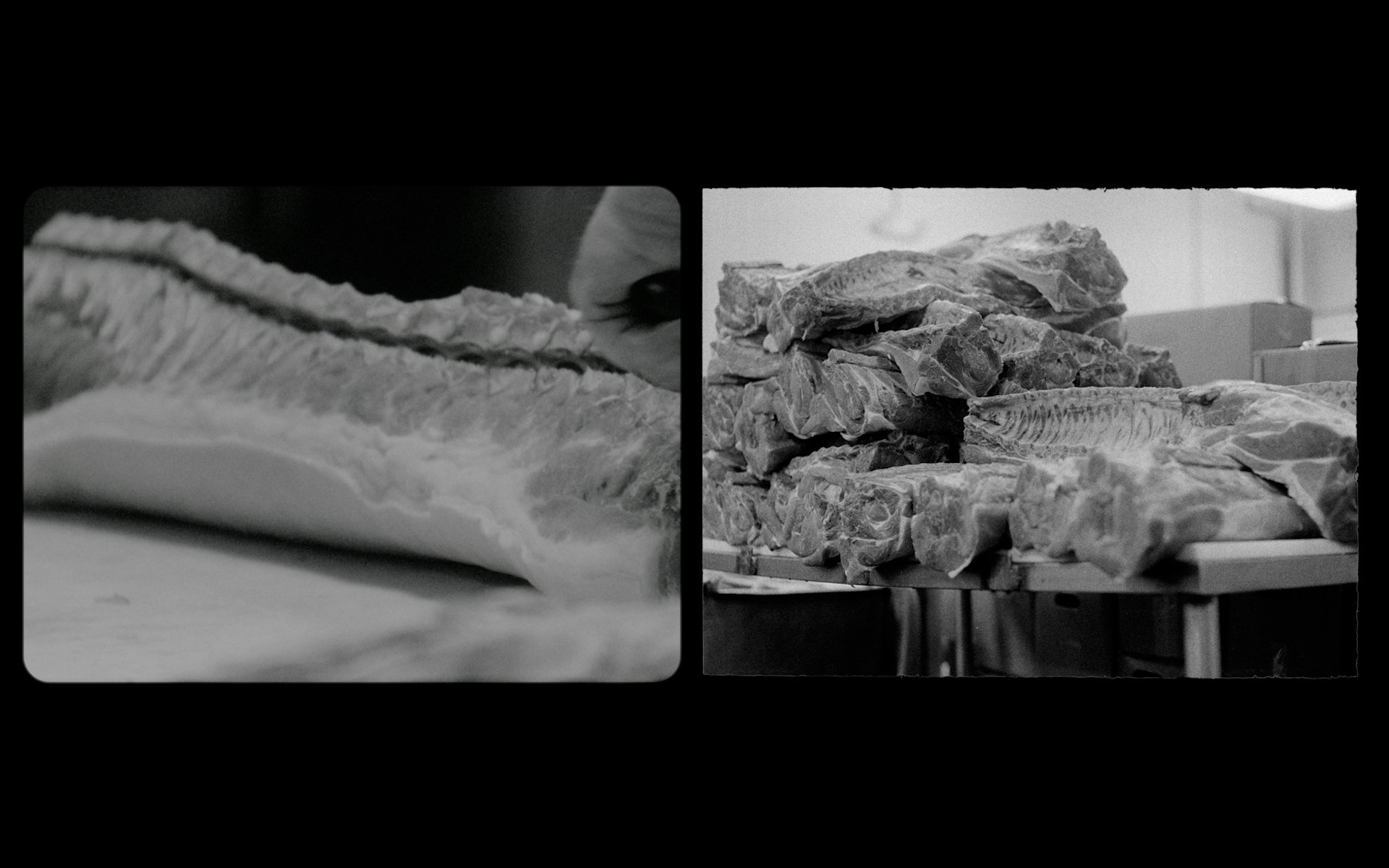ROY presents: Cat Mailloux, Krista Fast, Weiting Wei, Lydia Cornett & Julia Matejcek
The Form That Remains
Cat Mailloux
I am drawn to processes that form a tactile memory of touch. This sense of touch translates into and across mediums of fiber, drawing, and sculptural forms. Weavings, quilted, and felted works mark an imminent and insistent gesture of the hand and body. Text, in short, and extended narrative, take the form of hand-made books finding their place on an intimate scale, forming a one-to-one relationship with the viewer. These works probe my sense of spirituality, which is largely molded by the Christian traditions of my family history. They allow consideration for inevitable moments of corporeality alongside the impulse and desire for immateriality.
How I handle materials —layering, folding, pressing, creasing, embedding— impresses sets of conditions that connect a physical body to physical material. All the while, there is a question of how one might transcend materiality, and how a considered act of touch might serve as the vehicle of such a transformation.
ROY asks
What are your name and preferred pronouns?
Cat Mailloux, she/her/hers
How has art (whether it be your own art or art in general) changed you?
Art has always been a way to make sense of the world. It has allowed me to see the nuances of what is around me, particularly in the experiences of others. It makes me pause, notice, and observe. Art-making feels second nature to me, and it has been a companion during a lot of difficult life circumstances that don’t make sense. Art has taught me to pay attention, to everything.
How did you start your artistic practice?
I have been making things since I was very young. I didn’t encounter the word “practice” as it relates to art until I began studying art in an undergraduate program, but I think I have always been practicing art, though it has certainly morphed and taken different forms over time. My practice has developed with the persistence of curiosity, questions, and just doing the work, even when its form is hard to define.
When a first-time viewer sees your work, what is the first word that you hope they think when looking at it?
Atmosphere/density
Krista Fast
My physical work is largely comprised of watercolor crayon and reductive wax paintings on decorative plate glass, as well as intricate sculptures made from found objects and junk store items. With both mediums, I’ve sought to represent aesthetic over-stimulation that leads to the expansiveness of imagination and wonder, much like that experienced in childhood when one visits a candy shop. As a child, I had a strong desire to see all colors and textures at once, including colors never seen before. With each project, I set out to re-capture this feeling of simulated desire and satisfaction. I believe that this desire to satiate our hunger for wonderment with consumerist impulses is innately human, and I hope to bring this incongruence to light with my new works in virtual reality. Virtual environments composed of my paintings, photogrammetric replicas of original works, and kaleidoscopic reflections will further enforce feelings of overstimulation and surreality while calling to mind Baudrillard’s concept of simulacra: “It is no longer a question of imitation, nor duplication, nor even parody. It is a question of substituting the signs of the real for the real (Baudrillard).” Here, the copy that has been reproduced beyond recognition replaces the real, much like our childhood sense of desire for the fantastic becomes replaced by consumerism, and our capacity for wonder and limitations of reality constrict. The wholly contained virtual viewing environment references Plato’s Cave or concept of a limited and shrinking reality which merely provides distorted reflections of what is, and a fraction of a sliver of a window into the expansive nature and possibilities within our world: “In every way, then, such prisoners would recognize as reality nothing but the shadows of those artificial objects (Plato).”
ROY asks
What are your name and preferred pronouns?
Krista Faist, she/her/hers
How has art (whether it be your own or art in general) changed you?
By experiencing a window into other people’s inner worlds, my youthful curiosity flourishes. This sense of wonderment has led me to explore a variety of mediums- ranging from oil paint, encaustic, watercolor crayon, sculpture, cut-up tapes, and finally to new media, including projection mapping and virtual reality art. Art inspires me to be open to new experiences and ideas, no matter how challenging they may be at first.
How did you start your artistic practice?
I drew rainbows constantly at my Montessori preschool - I wanted to see every color and shape at once and believed that if I kept at it, I would see colors and textures never seen before. This never happened precisely as I had hoped, but I learned to associate memories, sounds, and emotions with certain objects, textures, and colors. As my practice has matured, I’ve become a collector and arranger of these.
When a first-time viewer sees your work, what is the first word that you hope they think when looking at it?
Paradox
Weiting Wei
The identity of motherhood is entangled with being an artist, knowing how materials work, using processes that are similar to domestic life allows familiarity with the forms, and muscle memory so that I am able to engage with the subtleties of the materials. How it moves and responds to my hands and the kitchen tools that I utilize to create the work. This reminds me in many ways of engaging with my children and family. That my behavior, or response to them and their needs shifts with each incident, and due to their personality they too respond to the same action in different ways. In the artwork, this is reflected through the way that some clay remains very flat, and thin, while others have a wave, curve or frill. The gathering of these actions over and over reflects in some ways the moments accumulated each day and each year building into something beautiful.
The shape has movement, almost like the river, it is moving and flowing, up and down with texture and shape. The forms are like ripples, folds, or fiber. The form appears as though it can be folded open almost in some ways, and yet it is constructed in such a way that each of. the lines are separate and accumulated. It explains how versatile mom is. We can be strong like. armor and soft like a blanket. We can be smart like scientists and silly like a clown. We wear dirty aprons or fancy high heels. We tour all around the world but always stay in our kid’s world. Because we are moms, we are versatile.
ROY asks
What are your name and preferred pronouns?
Weiting Wei, she/her
How has art (whether it be your own or art in general) changed you?
I would like to say that I grew up with art all around me, but I didn’t know they were art then...Such as my beautiful village, waving art by bamboo, origami, statues of bodhisattva in the temple, traditional local opera, and all the books of folklore stories in our small public library. I never stop purchasing art, but I started to understand what art is under the guidance of my mentors in CCAD.
How did you start your artistic practice?
I liked painting since I was young, but I hadn’t been to an art school before I went to CCAD. But I never stop painting, I draw anything I think they are pretty. My first sculpture was made in 2016 at CCAD.
When a first-time viewer sees your work, what is the first word that you hope they think when looking at it?
Touched, Powerful, Growth, Peaceful.
Lydia Cornett & Julia Matejcek
As MFA candidates with distinct practices in the Department of Art at the Ohio State University, we have each been independently experimenting with manual photochemical processes—Lydia Cornett with a Bolex 16mm moving image camera, and Julia Matejcek with a still 35mm Leica rangefinder. We began working collaboratively in the summer of 2021 and, in early 2022, took our work into the space of a family-owned butcher shop in rural Ohio to look at the interplay of images moving and still, bodies human and animal, and gestures brutal and graceful.
We enter the highly contested space of the butcher shop through visual analogies of the human and animal body. The multiple channels of the piece pass the action back and forth between moving and still images, freezing and starting the gestures of the worker maneuvering the carcass. The black-and-white film references the timeless nature of this labor, which has been the subject of films throughout the twentieth century including Charles Burnett’s Killer of Sheep and Georges Franju’s Blood of the Beasts.
The artistry of the meatcutter’s knife disassembles and separates, while the work splices together our two perspectives and formats. As Timothy Pachirat writes, the butcher shop has a specific politics of sight, operating to contain the process of animal becoming meat. This video installation opens up a space in between, where the syncopation of the meatcutter’s labor and rhythmic motions becomes a choreography of bodies.
ROY asks
What are your name and preferred pronouns?
LC: Lydia Cornett (she/hers)
JM: Julia Matejcek (she/hers)
How has art (whether it be your own or art in general) changed you?
LC: Working in film/video within an art context is actually quite new for me, but it has brought a new dimension and expansion to my background in documentary filmmaking.
JM: Becoming an artist has helped me to see many potential (and even contradictory) meanings and experiences that can be held within a single work.
How did you start your artistic practice?
LC: I started making short films in college, where I found the most meaning in storytelling through observation.
JM: I had used a camera often as a child, but it was a photography course in college with a particularly impactful teacher that opened my eyes to the seemingly infinite formal possibilities of the medium.
When a first-time viewer sees your work, what is the first word that you hope they think when looking at it?
LC: I hope our work activates a realm for the viewer and asks them to consider their own relationship to meat.
JM: My greatest hope for our work would be that there is an embodied sense of resonance from the visceral meeting with the sublime.




